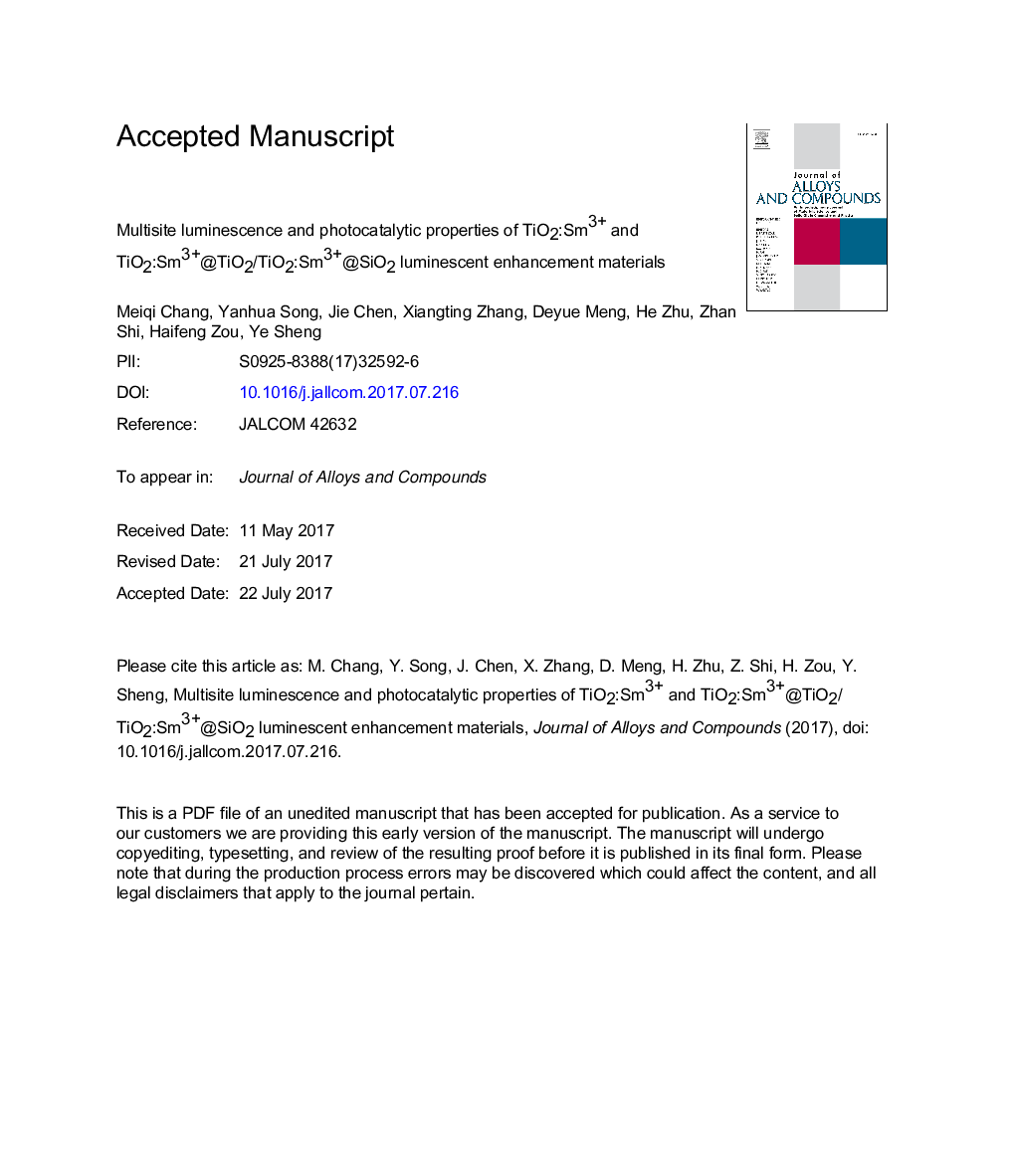| Article ID | Journal | Published Year | Pages | File Type |
|---|---|---|---|---|
| 5458397 | Journal of Alloys and Compounds | 2017 | 39 Pages |
Abstract
Sm3+ doped TiO2 nanocrystals with various morphologies were fabricated via a facile hydrothermal route, and the effect of morphology on the luminescence properties and photocatalytic activity of the products has been investigated. PL studies on TiO2:Sm3+ revealed that the sensitized emission is a much more efficient pathway than the direct excitations of Sm3+. Combined 10Â K spectra and theoretical analysis, several kinds of sites of Sm3+ ions have been found in TiO2 matrix. Most importantly, structural models for the formation of multiple sites are proposed based on the optical behaviors of Sm3+ at different sites. Photocatalytic results suggest that flower-like hierarchical architectures show the highest photocatalytic activity compared with nanorods samples with different aspect ratios, and the photodegradation efficiency was 96.8% after 20Â min for degradation of methyl orange under white light irradiation. And surface photovoltage spectroscopy (SPV) have been measured to understand the separation and transfer behaviour of photogenerated charges which are helpful for explaining the photocatalytic and luminescence properties deeply. Moreover, TiO2:Sm3+@TiO2 luminescent enhancement homo-structures and TiO2:Sm3+@SiO2 luminescent enhancement hetero-structures are prepared. The effect of calcination temperature on luminescence intensity and the luminescence enhancement mechanism have been discussed in detail.
Keywords
Related Topics
Physical Sciences and Engineering
Materials Science
Metals and Alloys
Authors
Meiqi Chang, Yanhua Song, Jie Chen, Xiangting Zhang, Deyue Meng, He Zhu, Zhan Shi, Haifeng Zou, Ye Sheng,
